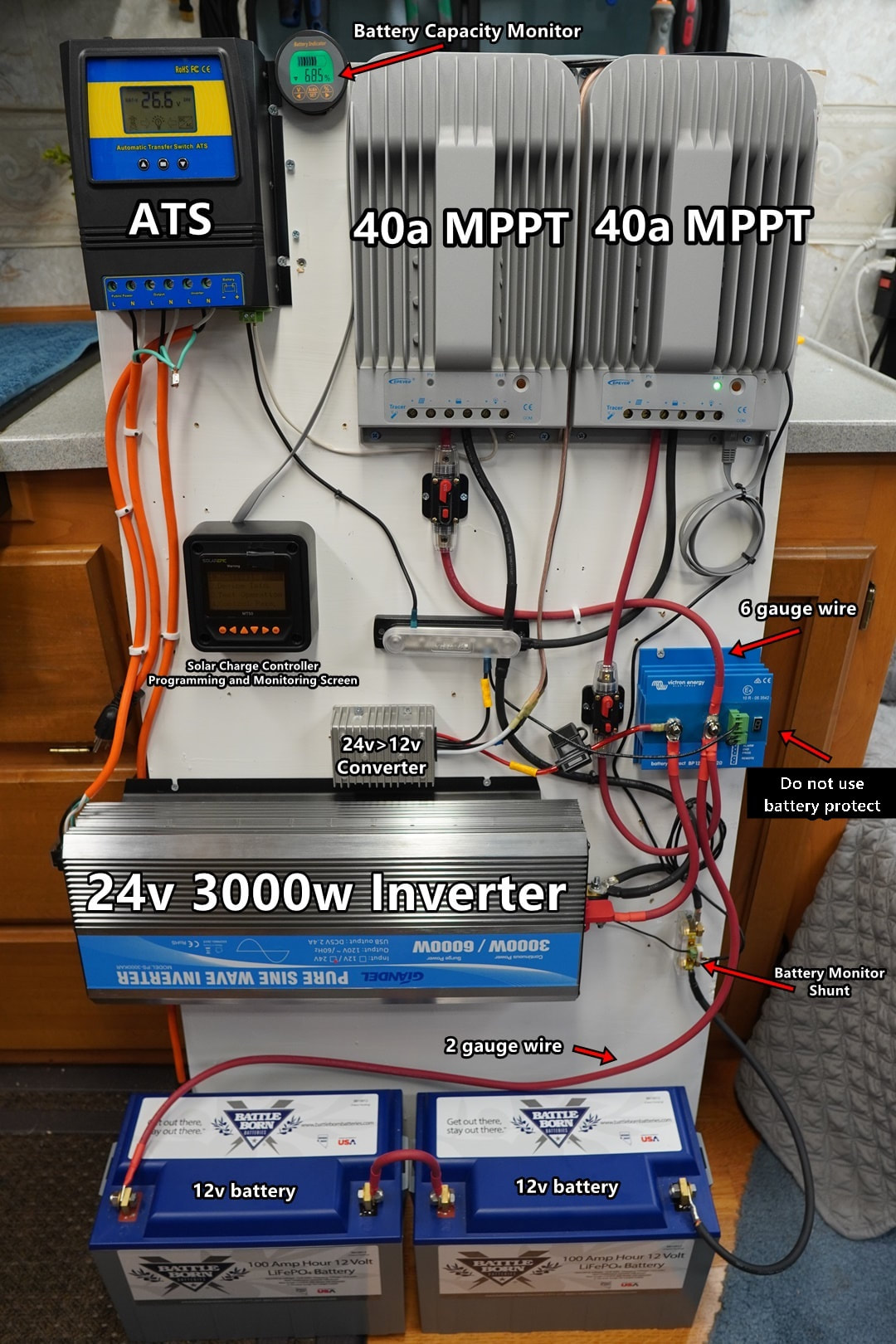severin20
New Member
- Joined
- Jun 18, 2020
- Messages
- 28
Hello,
My name is Severin and this is my first ever solar install.
I purchased everything recommended for the 24V 4000 watt system as shown here.

My question is how do I connect 4000watts to the 40amp charge controllers that I have 2 of.
I got 16 panels at 250watts each. Hoping to wire 8 of them into one charge controller and 8 of them into the other controller.
The panels are 24v with the following specs:
EPEVER MPPT Solar Charge Controller 40A 150V PV Solar Panel Controller. more info about the charge controller is here:
https://amzn.to/3006KTl
Should I wire 4 panels in parallel, and then 2 of those groups in series to make 8 panels that go into a charge controller?
Any help would be greatly appreciated. My kids get back from their grandparents in 3 weeks so I have a little time to figure this out, but if I don't we got no power! well i guess i'd buy a gen
My name is Severin and this is my first ever solar install.
I purchased everything recommended for the 24V 4000 watt system as shown here.

RV Solar Power Blue Prints
Building a vehicle mounted solar power system? Let me help.
www.mobile-solarpower.com
My question is how do I connect 4000watts to the 40amp charge controllers that I have 2 of.
I got 16 panels at 250watts each. Hoping to wire 8 of them into one charge controller and 8 of them into the other controller.
The panels are 24v with the following specs:
- Rated Power: 250W
- Open circuit voltage (VOC): 37.6 V
- Max power voltage (VMP): 30.3 V
- Short circuit current (ISC): 8.85 A
- Max power current: 8.27 A
EPEVER MPPT Solar Charge Controller 40A 150V PV Solar Panel Controller. more info about the charge controller is here:
https://amzn.to/3006KTl
Should I wire 4 panels in parallel, and then 2 of those groups in series to make 8 panels that go into a charge controller?
Any help would be greatly appreciated. My kids get back from their grandparents in 3 weeks so I have a little time to figure this out, but if I don't we got no power! well i guess i'd buy a gen



